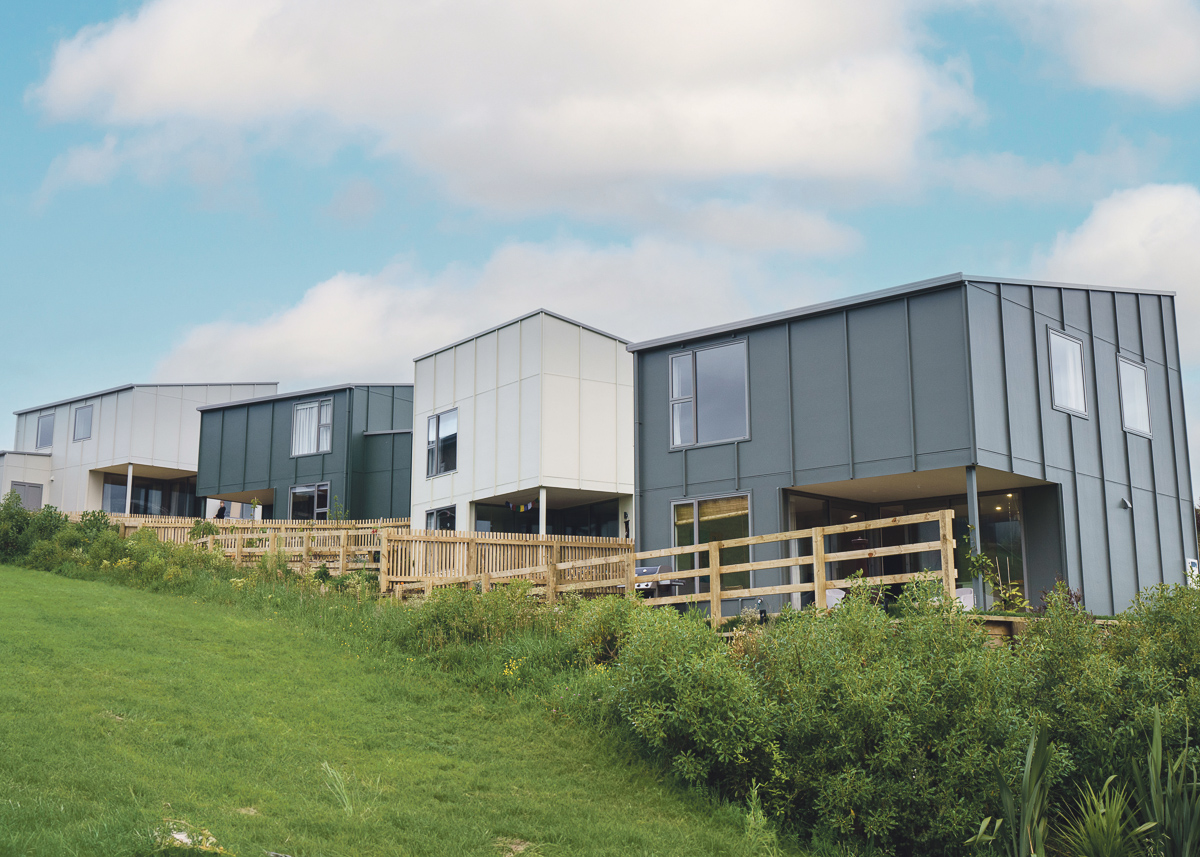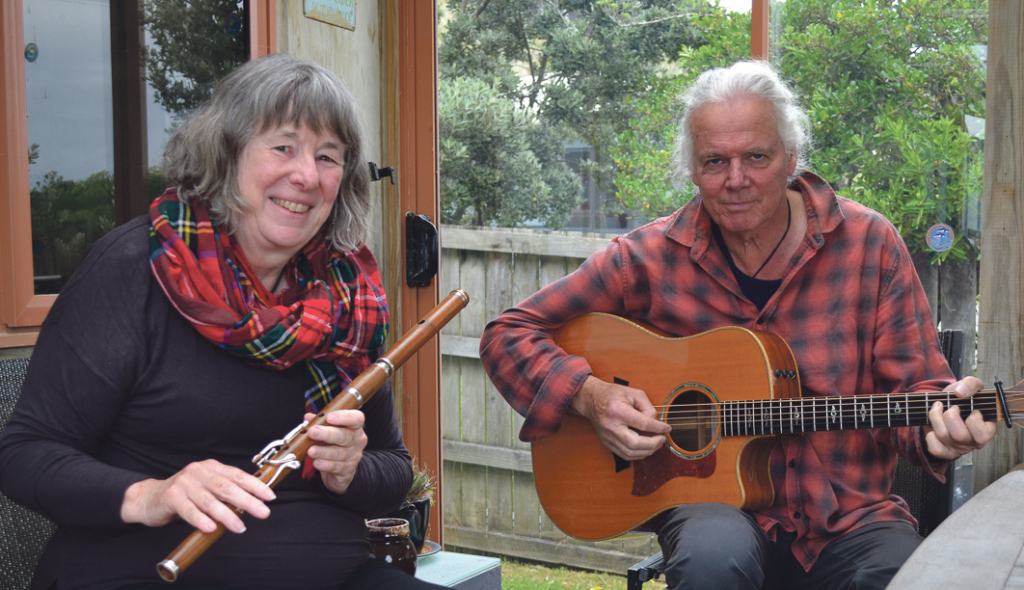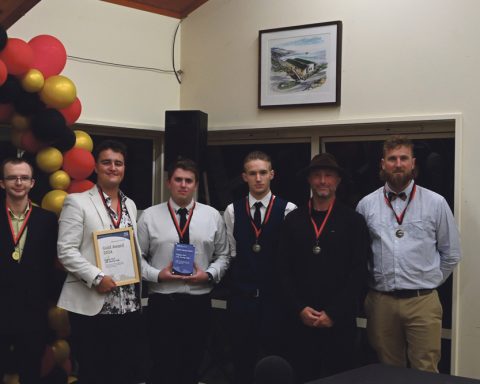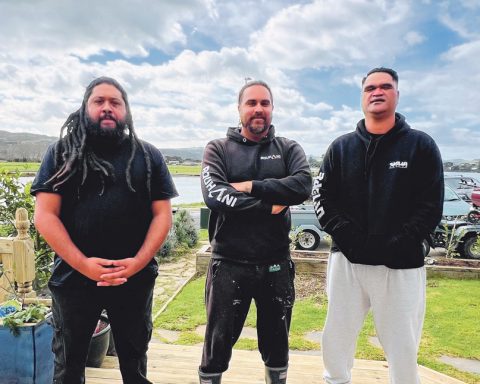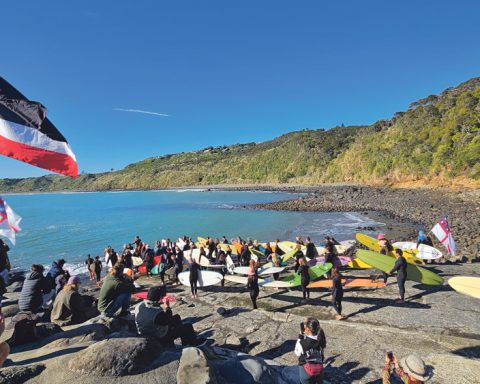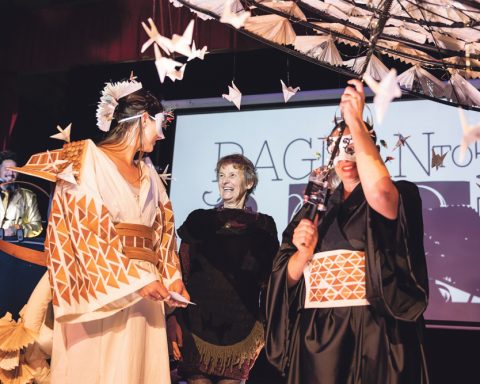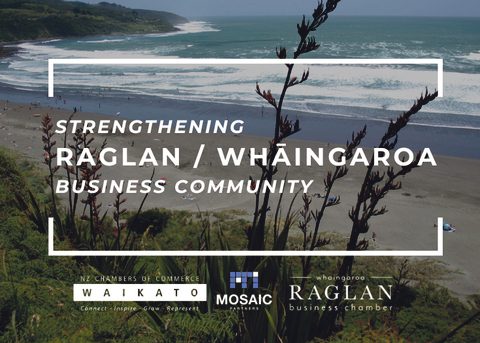A non-profit housing development has delivered well-built and sustainable homes for five local families in Raglan at a low-cost.
The Kōmako Place initiative is the brainchild of Hayden and Hayley Vink of Wainui Environmental and Hay Property, and was driven by the experiences of friends who were struggling to get their foot on the Raglan housing ladder.
“We want families to be able to live here and thrive here. So that was a big driver for us,” Hayden says.
The Vinks’ ethos for the Kōmako Place enclave in Rangitahi Peninsula is ‘good homes can be built for good people, not good profit’ and a cost price three-bedroom, standalone home is a dream come true for first-home buyers in the hot Raglan housing market.
The original purchase price they had in mind was around $550,000 but when the development broke ground three years ago they had to factor in the changing economic landscape for building.
“With the rising cost of building, the project costs were going up and lending requirements were getting tougher, so the project got harder and harder,” Hayden says.
And while their initial goal seems like wishful thinking now, they know they have produced quality, low-cost homes that will stand the test of time.
“It could have been done for a lower cost but this would have been at the expense of good design. We live in Raglan – and want to see good development done here for future generations” he says
Another problem the Vinks says first home buyers face in Raglan is housing stock largely made up of baches that typically need extensive renovations to bring them up to today’s healthy homes standards.
“We know that the purchasers would struggle to even get in the market and then to have the funds to do any kind of renovation adds a whole lot more to the price. So we wanted to create a finished product with materials that will stand the test of time” Hayley says.
They based a lot of the Kōmako Place development on non-profit Nightingale housing, which provides a variety of different affordable housing models in Australia. Drawing on this established non-profit organization for inspiration and ideas was invaluable.
The Vinks aren’t new to building beautiful housing developments in Raglan. Hay Property and their Northpoint project in Rangitahi was recently named in the Master Builders House of the Year Top 100 and it scooped up Regional Category Winner Multi Unit Award and a Gold.
Removing some of the risk associated with development projects was key to removing the profit margin and pushing ahead with the development.
Strong partnerships and support from Rangitahi and the BNZ bank helped facilitate the project.
“Rangitahi were instrumental in making this project happen and supported it wholeheartedly from feasibility to construction,” Hayley says.
BNZ’S partnership in Kōmako Place forms part of its commitment to providing $10billion in sustainable finance by 2025 and a further $50million in no/low interest loans to drive better long term social, cultural and financial wellbeing of Kiwis.
A development of this type is very exciting in the initiation phase, however getting through the process of funding, council consenting and understanding legal implications is challenging – let alone the balance of good design with value engineering.
Hayley says she has heard of similar developments with passionate people who haven’t made it to the finished product stage.
“There’s a lot of front-end stuff and no final product. Getting the funding, special sale and purchase agreements and covenants right is hard work. We had to have them all pre-sold before we could start. Which is fair, the banks don’t take risks with that.”
In fact, it was 18-months of front-end work before the project was funded and ready to break ground.
The Vinks say covenants included in the purchase were put in place to encourage the local community to flourish.
“The point of the rules was not to be overly restrictive but to make sure that the intent of the project had longevity – for example the houses must be owner occupied to deter short term holiday rentals,” Hayley says.
The project was designed by Red Architecture and built by Kiwi Designer Homes.
“We were fortunate that across the board our team of contractors and consultants really got on board with the ethos of the project – charging fair or discounted rates for their services; we can’t thank them enough. Blair and the team at Kiwi Designer Homes did an awesome job and cost overruns were kept to a minimum with their careful management,” Hayley says.
“Dion and the team at DRN excavations particularly went above and beyond on this project,” Hayden adds.
Having successfully completed their first non-profit housing development, Hayden and Hayley are considering having another go and know it will be easier second time around.
“I think now that we’ve done it, it’s not just a nice idea. People can see it and you can look and touch and feel it,” Hayley says.
“From what we’ve learned in this process, there are opportunities to structure it better and improve the final product” Hayden says.
“We’d love to talk to people that have a passion and funding avenues for this sort of development. To share what we have learned would make the whole process easier rather than starting from scratch.”
By Janine Jackson
